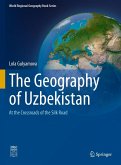'The Ganges: Cultural, Economic, and Environmental Importance' is a geographical, cultural, economic, and environmental interpretation of the Ganga River. The Ganga River originates from Gaumukh- situated in the high Himalaya, flows through the world's biggest fertile alluvial plain, and inlets into the Bay of Bengal at Ganga Sagar. It makes a unique natural and cultural landscape and is believed to be the holiest river of India. The Hindus called it 'Mother Ganga' and worship it. The towns/cities, situated on its bank, are world-famous and are known as the highland and valley pilgrimages. The water of the Ganga is pious, and the Hindus use it on different occasions while performing the rituals and customs. This book is unique because no previous study which presents a complete and comprehensive geographical description of the Ganga has been composed. This book presents the historical and cultural significance of the Ganga and its tributaries. Empirical, archival, and observation methods were applied to conduct this study. There are a total of 10 chapters in this book such as 'Introduction', 'the Ganga Basin', 'Geography of the Ganga Basin', 'the Ganges System: Ganga and its Tributaries', 'Ganga between Gaumukh and Uttarkashi', 'the Major Cultural Towns', 'Major Fairs and Festivals', 'Economic Significance of the Ganga', 'Environmental Issues', and 'Conclusions'. The contents of the book are enriched by 89 figures, 15 tables, and substantial citations and references.
Dieser Download kann aus rechtlichen Gründen nur mit Rechnungsadresse in A, B, BG, CY, CZ, D, DK, EW, E, FIN, F, GR, HR, H, IRL, I, LT, L, LR, M, NL, PL, P, R, S, SLO, SK ausgeliefert werden.









